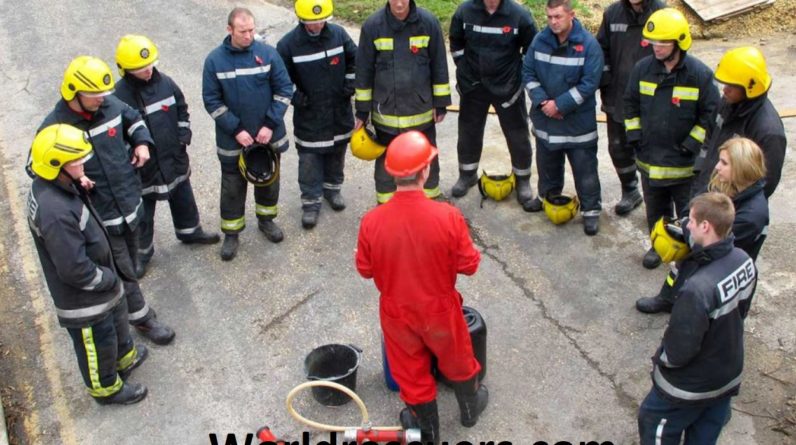
Leadership traits are not so common in the leaders of various departments. If you have yet to have the misfortune of working with an unhealthy leader, consider yourself lucky.
An unfriendly leader remained not accessible and pretended not to listen to their subordinates. Their behavior is based on the thought of self-righteousness- they think they are the smartest in the room. Sometimes this is because they are hiding behind their incompetence.
Toxic leaders are experts in creating a toxic environment in which team members are afraid to speak up and share constructive ideas due to fear of the leader. Poor leaders criticize or ignore the suggestions of team members, which causes a lack of trust. These ultimately compromise the team’s ability to work effectively together and perform their assigned duties safely.
The remaining category of poor leaders may be those who believe they deserve to be a leader. They think so due to their skills in their current position or longer service tenure in any department.
However, research suggested that these individuals did not always make strong leaders and often succumbed to the “Peter Principle.”
What is the peter principle?
The Peter Principle is a management theory proposed by Dr. Laurence J. Peter in his 1969 book “The Peter Principle: Why Things Always Go Wrong.”
This theory states that employees of any department rise to their level of incompetence. This result in poor performance and inefficiency in the department. The organizations have a promotion structure based on current performance rather than future role abilities. This principle is often used to describe the phenomenon of employees being promoted to management positions despite lacking the necessary skills required for the position.
Common Leadership Traits
The leadership personalities emerged in different ways. Some leaders own natural leadership traits, and others need to develop them. The leadership traits developed over time through experience and training.
Most of the time, the leader in the fire service comes for a specified duration. This duration may be for 5 or 4 years, depending upon the law of the service. The service leader would either be an expert in firefighting or in the medical services field.
But then again, commitment is the most important factor in becoming a successful service leader. The commitment to learning and understanding the trade, department policies and procedures, and leading by setting an example.
What traits make a great leader in the fire service?
Great fire service leaders possess inborn mentoring abilities and are dedicated to continuously developing their leadership skills. These leaders took the initiative to mentor and guide the new cadets/recruits. They taught essential skills and were always willing to learn from mistakes. They view all functions as ways to better the community rather than personal gains.
The recruits or cadets are the ultimate future leaders in the coming days. Those who are competent and dedicated will become future leaders through promotion.
Leadership styles in the fire service are constantly evolving. In the service, it is also vital for leaders to be open to feedback and development to lead their teams in the most effective possible ways. Each leadership style has its advantages and disadvantages, depending on the situation. A style may be more appropriate for one leader than another.
However, certain traits and behaviors are common among successful leaders in the emergency service or department. Few of them are given here,
- Great leaders stay calm: A good leader can communicate effectively with their team members. This communication would be without becoming overwhelmed by the situation.
- Successful leaders believe in accountability: A great leader would be direct and clear in communication and hold their team members accountable. They are accountable for their actions without being overbearing or overly punitive. This trait is essential for a leader to teach the lesson and run services smoothly.
- Develop interpersonal skills: Leaders must find common ground among team members and create a healthy and comfortable workplace. They also foster an open and constructive dialogue between their members and colleagues.
- Successful leaders communicate well: Leaders must effectively exchange relevant information and directives with their team leaders, remain open to feedback, and listen to each team member’s input.
- Have the will to go above and beyond: The Fire service or department leaders must be willing to put in the extra effort to ensure the team’s success.
- Vision is one of the Six traits of leadership: They set high standards for themselves and their team members to ensure that tasks are done safely, effectively, and efficiently. They possess a strong and clear vision to lead the department.
By taking on these traits and common behaviors, firefighters can become successful leaders and effective team players.
A Great Leader
A leader who is caring, empathetic and inclusive, always looking for ways to develop and empower the team, the one that creates a healthy working environment for the team and ultimately leads to a safer and more efficient department. Strong leadership in the fire service or department is critical to ensure the safety and well-being of the community and the firefighting teams.

Hi, I am John Smit a Captain in Fire Department City of Newyork with over years of experience in the field of Firefighting and HSE. My passion for fire safety started when I was a young boy and witnessed a neighbor’s house go up in flames along with precious lives. Since then, I had dedicated my life to ensuring the safety of buildings, properties, and individuals in case of a fire and medical emergencies.

